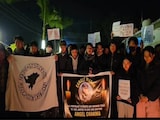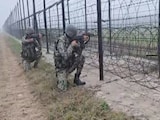- Iran has recruited non-state actors to carry out violence in the US since 2020
- A plot to assassinate Donald Trump was led by Farhad Shakeri from Tehran
- Shakeri recruited two former inmates for the assassination attempt, both were arrested
In the years following the 2020 US drone strike that killed Iranian General Qassim Suleimani, the country's retaliation strategy has largely avoided dramatic, direct confrontations.
According to US prosecutors, the Islamic Republic recruited non-state actors, including American ex-convicts, organised crime members, and gang affiliates, to carry out targeted violence inside the United States.
A Justice Department complaint revealed that Iranian officials plotted to assassinate US President Donald Trump during the 2024 election campaign. The plan was led by Farhad Shakeri, an Afghan national living in Tehran.
Instead of deploying an Iranian operative, Shakeri recruited two men - Carlisle "Pop" Rivera, a Brooklyn pipe fitter, and his friend Jonathon Loadholt of Staten Island - he met in a US prison over a decade earlier.
Both were arrested by federal agents before the plan advanced.
This was not an isolated case. US law enforcement has identified similar plots in recent years.
In 2022, Iranian officials allegedly tried to hire Russian mafia hitmen to kill Masih Alinejad, a journalist and critic of the regime. Another operation involved a Canadian member of the Hells Angels, allegedly tasked with killing an Iranian defector in Maryland.
In 2011, US officials thwarted an attempt to bomb a Washington, DC, restaurant in a plot to assassinate the Saudi ambassador, a plan that relied on someone with supposed ties to the Mexican drug cartels.
Bruce Hoffman, a terrorism scholar at Georgetown University, said that while Hezbollah (Iran's proxy) has had some success embedding operatives in the US, recent plots have not featured trained agents. "The incidents we've seen in recent years have probably been from the C-team," Hoffman told The New York Times.
"C-team" refers to a shorthand, somewhat informal way of describing less skilled, less trained, or lower-tier operatives, unlike an "A-team," which would be composed of elite, professional agents or operatives with specialised training.
Despite public warnings about Iranian sleeper cells, the US has not seen evidence of major coordinated activity by trained Iranian or Hezbollah operatives on American soil in recent years.
In 2017, two men in New York and Michigan were arrested for conducting surveillance on potential targets for Hezbollah. In 2019, a New Jersey man was sentenced for scouting major landmarks in new York like Times Square and the Statue of Liberty after receiving military-style training from the group.
Following last month's US airstrikes on Iranian nuclear facilities, Homeland Security and Customs and Border Protection issued warnings about possible retaliation, including from sleeper cells. Internal data shows that about 1,700 Iranian nationals were arrested at the southern US border from October 2021 to November 2024. The records do not specify whether those individuals were fleeing the regime or aligned with it.
Soon after the strikes, ICE detained nearly a dozen Iranians on immigration violations. Among them was a man labelled as a known or suspected terrorist and another who admitted ties to Hezbollah. One, Ribvar Karimi, served in the Iranian army.















